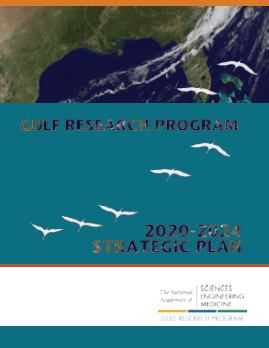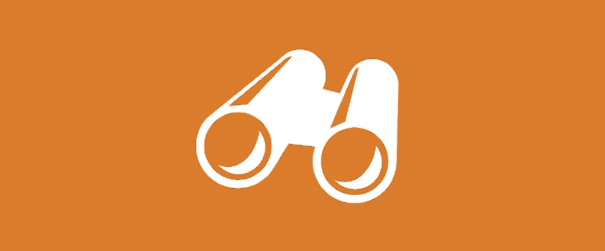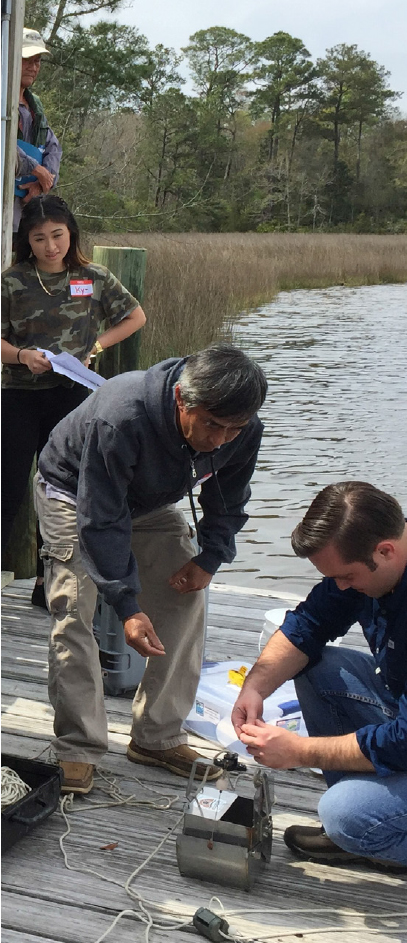
Introducing the 2020–2024
STRATEGIC PLAN
Developed in 2019 and released in early 2020, the GRP’s new 2020–2024 Strategic Plan was driven by a central question: What can we achieve in the next 5 years to realize a healthier, safer, and more resilient Gulf region?
The plan reaffirms the four main focus areas of the GRP. Work will continue on Offshore Energy Safety; Environmental Protection and Stewardship; Gulf Health and Resilience; and Gulf Education and Engagement. In addition, the GRP will create a fifth focus area devoted to data, data products, and knowledge to help support decision making.
For each of the five program areas, the Strategic Plan identifies a 5-year goal and a set of nearer-term objectives and activities to help the GRP make measurable progress over the next 5 years. To meet those goals and objectives, the GRP will design cross-cutting studies, projects, and other activities that integrate across two or more of the program areas.
The Strategic Plan also expands the tools that will be employed to accomplish the goals. The GRP will use four approaches to achieve its new goals: (1) advance scientific understanding; (2) build partnerships and engage networks; (3) bridge knowledge to action; and (4) monitor for progress and change.

Visit the GRP website to view:
- 2020–2024 Strategic Plan
- An Overview of the 2020–2024 Strategic Plan
- Frequently Asked Questions About the 2020–2024 Strategic Plan




Formulated in 2019; Launching in 2021
Offshore Situation Room: Enhancing Resilience to Oil Spills in the Gulf of Mexico
Deepwater Horizon ranks as one of the worst environmental disasters in U.S. history. The year 2020 marks the 10th anniversary of the disaster and presents an opportune time to assess the progress that has been made in offshore energy safety, environmental protection and stewardship, and human health and community resilience.
While much has been done, much remains to be done to protect against similar disasters. The Offshore Situation Room is an effort to convene experts from industry, multiple levels of government, academia, community organizations, and nongovernmental organizations to assess critical questions that need to be answered to build greater resilience to oil disasters in the Gulf of Mexico.
At the heart of the Offshore Situation Room is an event in which participants discover knowledge and policy gaps through interactive “serious” games, presentations, and small group discussions. The inaugural event, originally scheduled for March 2020, will be rescheduled in 2021. The work continues and builds up to the penultimate event through a new Offshore Situation Room webinar series. Learn more here.
Gulf Scholars Program: Engaging Engineering Students
A pilot program, inspired by the National Academy of Engineering’s Grand Challenges Scholars Program, will be launched at five Gulf institutions to engage undergraduate engineering students in topics of human health and community resilience, environmental protection and stewardship, and offshore energy system safety while providing the skills needed to address complex problems across the region. Learn more here.
A Consensus Study Report Series: Monitoring Progress and Change in the Gulf
In an effort to continue to produce quality reports that document trends and progress and identify challenges, knowledge gaps, and emerging needs, a new consensus study report series will begin in 2020. The consensus study report series will document the progress of the safety of offshore oil production, environmental protection, and the health and resilience of Gulf coast communities. The National Academies will produce this series every 3 to 4 years during the life of the GRP. Learn more about our offshore energy report series here and our environmental trends report series here.



